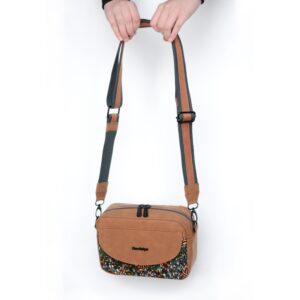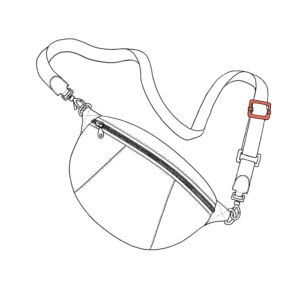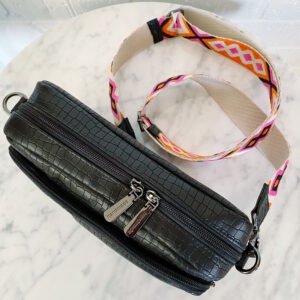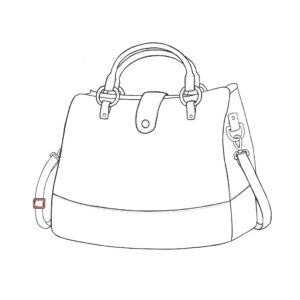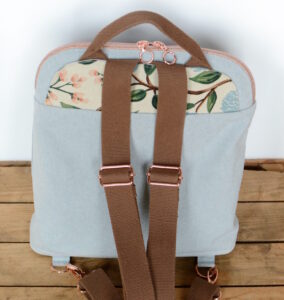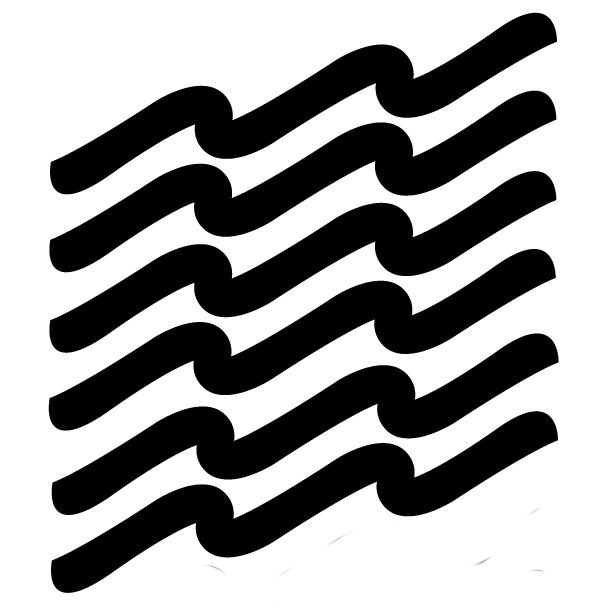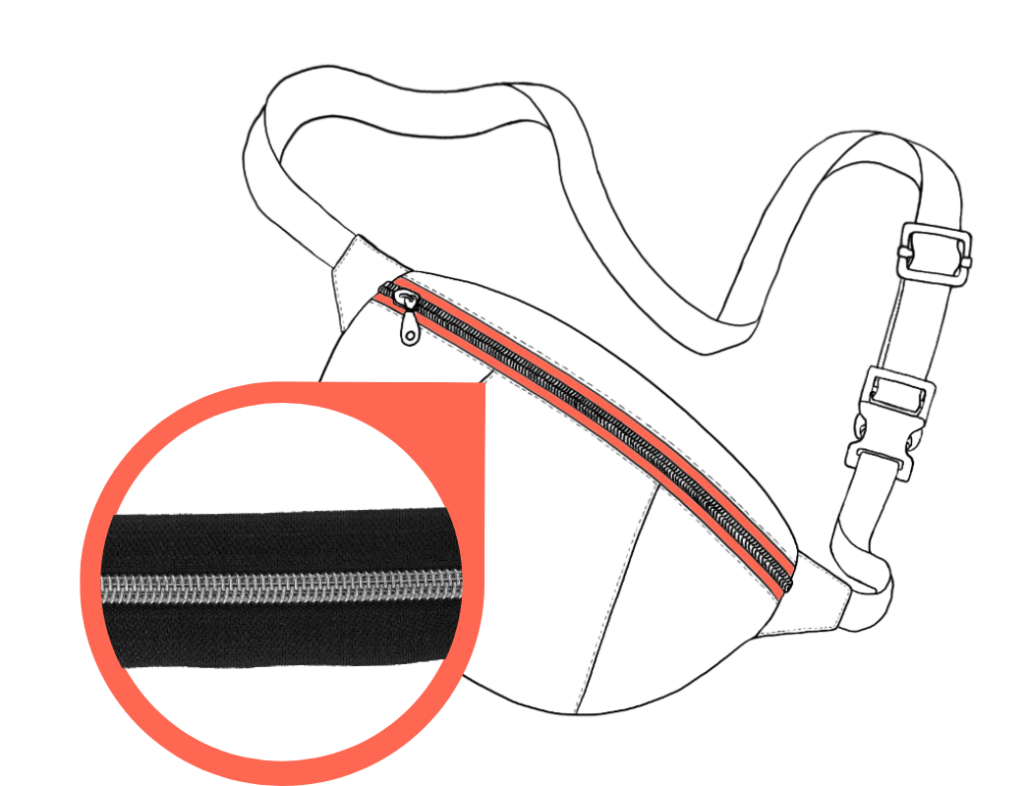
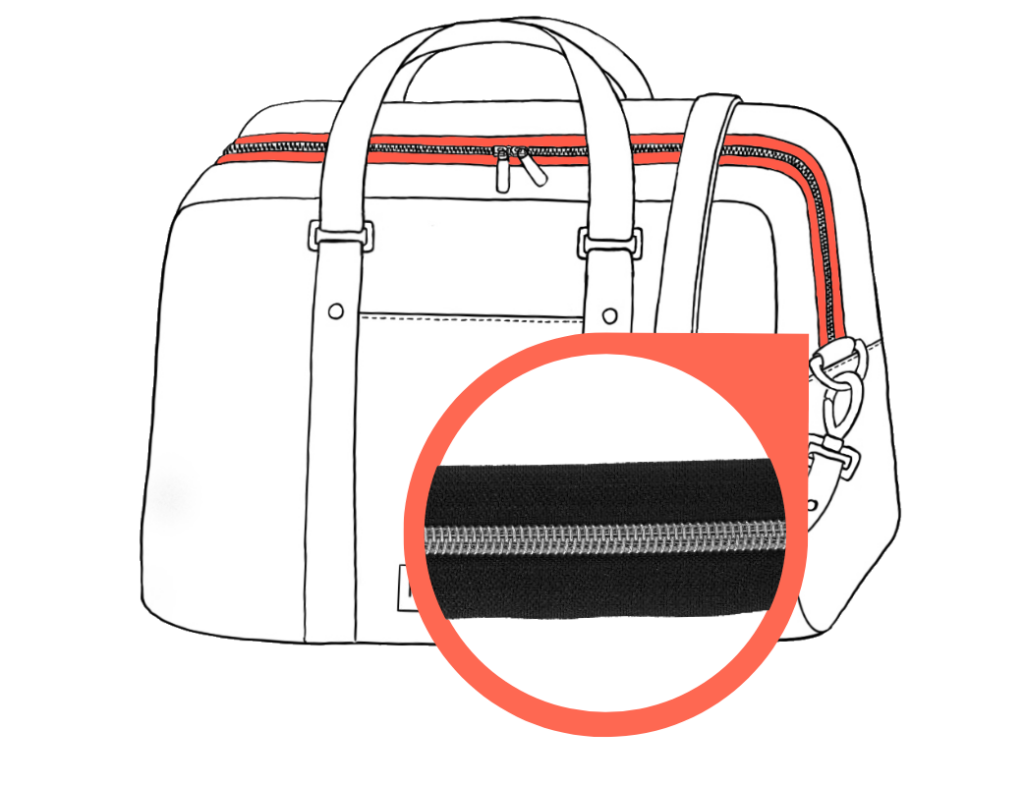
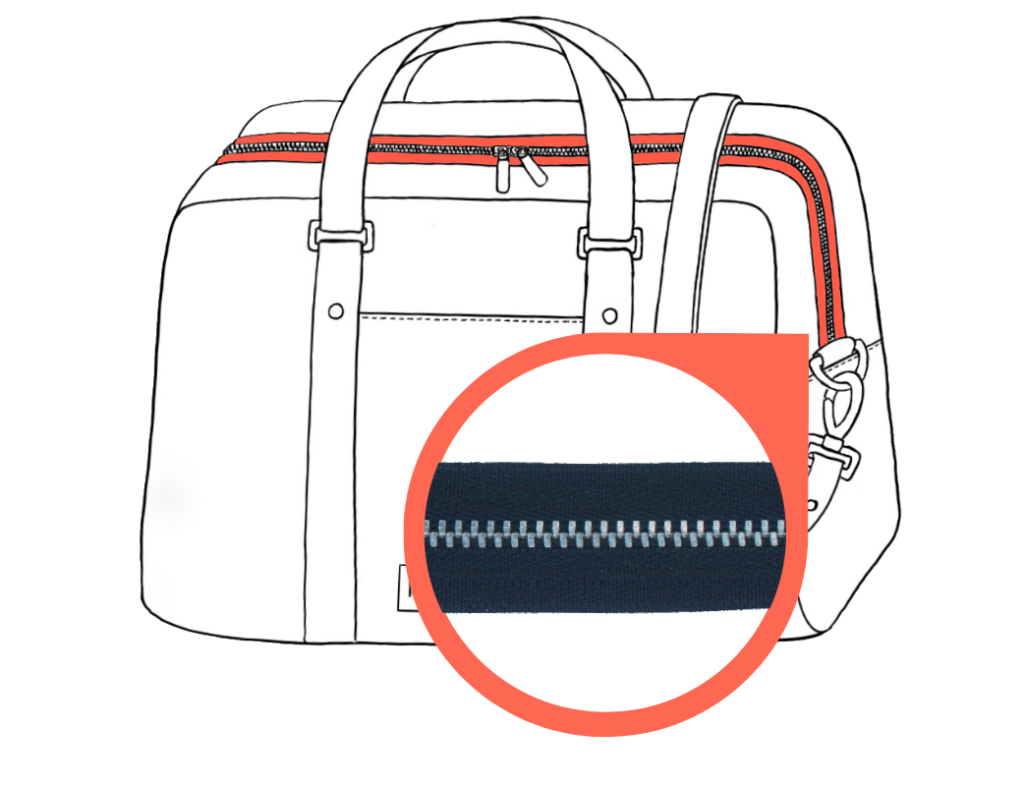
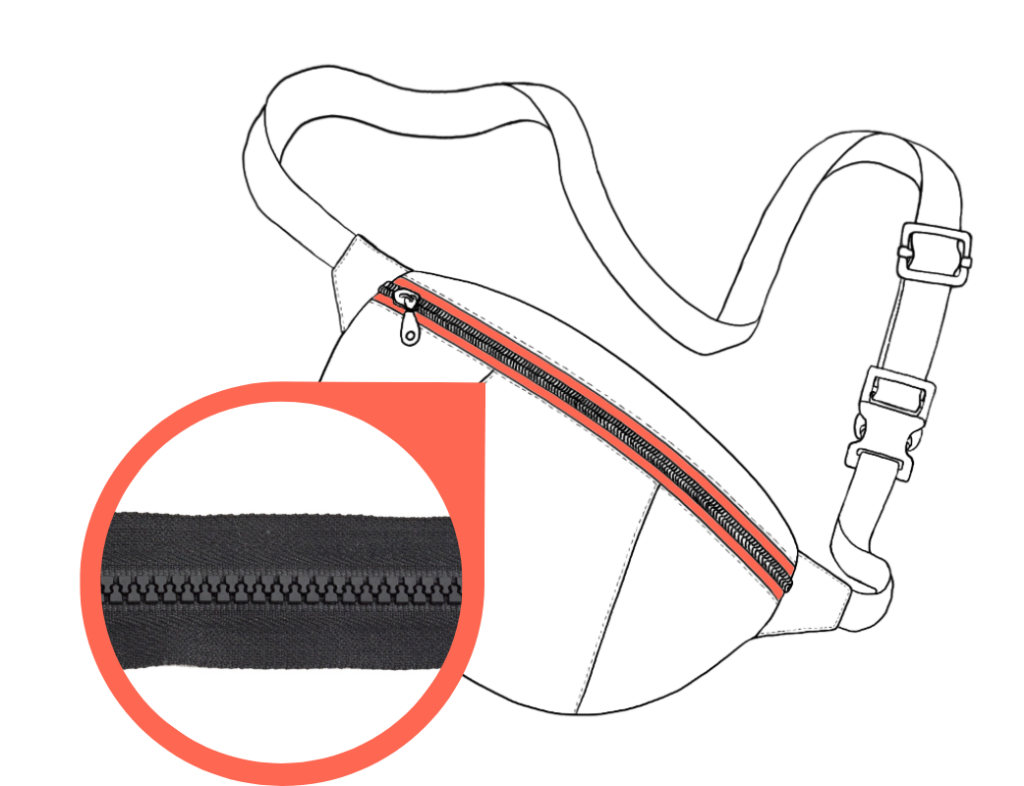
an essential bag closure
Everybody knows zippers. Zippers are everywhere and in all kind of forms. Take your jacket (separating zipper), your dress (blind zipper) or jeans (short zippers), your sleeping bag (very long zippers) or tent (waterproof) to name a few.
But bagmakers, bagmakers LOOOVE zippers. A decade ago, we did not have many options in style and color. But that has changed fiercely with the emergence of zipper-by-the-yard on the creative marketplace.
We could fill pages on this topic, but because we do want you to get on with your bag project at some point, we’ll make it as brief as we can and limit our scope to zipper-by-the-yard, also known as continuous zipper, endless zipper or zipper tape.
To put it briefly, zipper-by-the-yard is an endless tape with teeth that you cut to the length you need.
Take a good look at the overview below, which summarizes the most important things about zippers. This is essential knowledge because the type and size of your zipper determine the size and type of zipper slider you need to open and close that zipper (or vice versa).
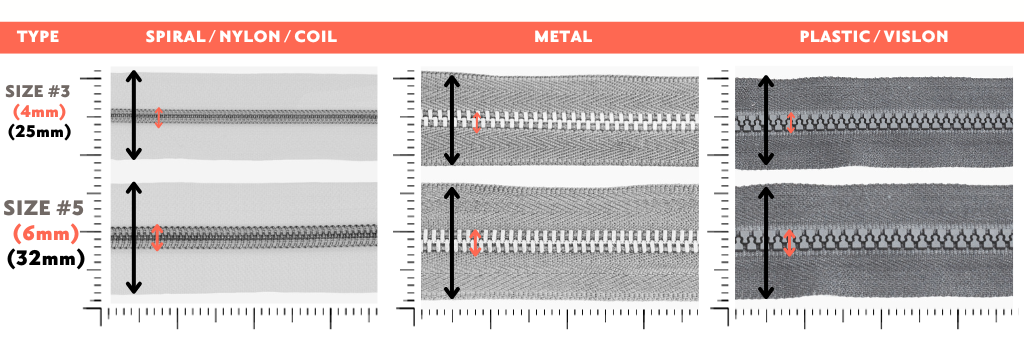
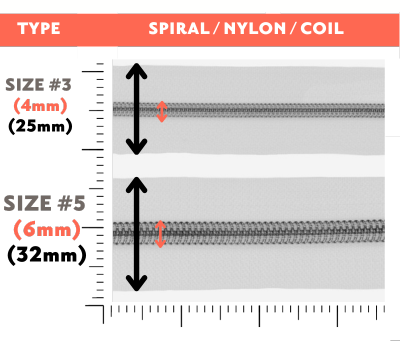
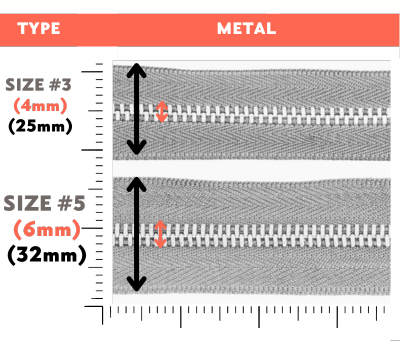
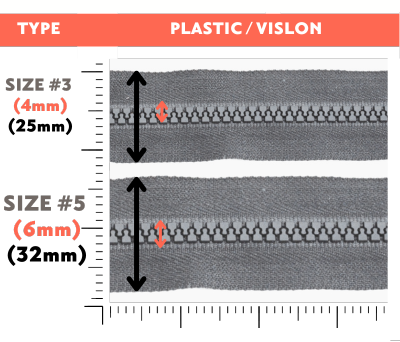
Essentially, there are 3 types of zipper tapes: spiral, also called coil or nylon zippers, metal teeth zippers and vislon or molded plastic zippers. The molded plastic ones are often preferred for sportswear or outdoor gear. The metal ones are often the go-to zippers for leatherworkers. They prefer the sturdiness and timeless appearance.
Bagmakers like you and me though…
We want zippers that are easy to work with using a domestic sewing machine, flexible and fashionable. That’s where nylon zippers come into play!
- Easy to work with using a domestic machine: check! You don’t have to worry about breaking your needle, and can safely sew over the coil.
- Flexible: check! The cool thing about endless zippers is that you do not depend on predetermined ready-made zippers. You are super flexible in zipper length and number and style of zipper sliders (see below). You just cut the zipper tape exactly to the length you need. Whether your project calls for a single slider or 2 sliders that open head-to-head, nylon zippers can do both.
- Fashionable: check! These zippers exist in virtually all colors, designs and coil finishes. Bagmakers are especially charmed by the metallic look coil zippers because they can pair the look of the zipper perfectly with the rest of their bag hardware.
Next to type, zippers come in many sizes. Internationally, the size is indicated by a # and a number. The larger the number, the bigger the zipper. Easy, right? The most common sizes used in our field are #3 and #5.
- #3 – This is a rather narrow zipper, both in coil/teeth (4mm wide) and zipper tape (25mm wide when closed). This size is mostly used for small projects like clutches, wallets and pockets.
- #5 – This is the most common zipper size out there. The coil/teeth are about 6mm wide and the zipper tape is 32mm wide. It is used for all kinds of bags. As the main closure, for a front pocket, inside the bag…
FAQ
Question: I want to sew or repair a jacket. Can I use zipper-by-the-yard?
Answer: Unfortunately no. Unless you like to climb out of your jacket, jackets need zippers that open all the way. This can only be accomplished by separating zippers that have a small box at the end to insert the zipper tape. These do exist, if you search for them closely, but in order to durable install such a box, you need professional tools.
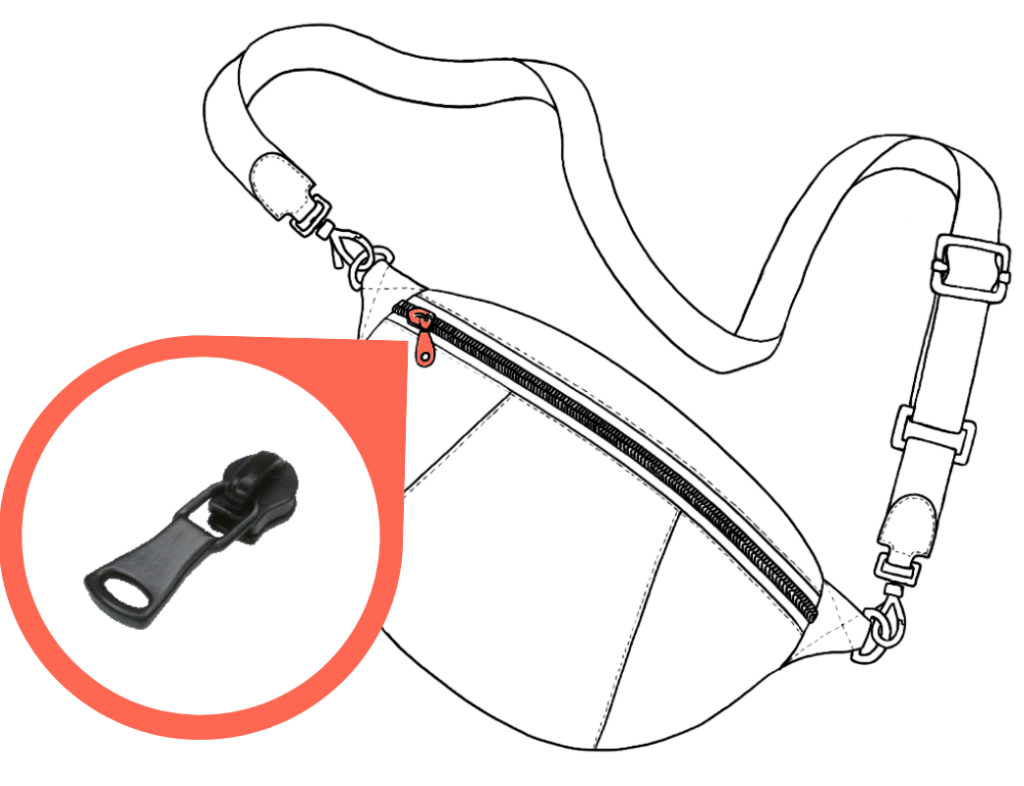
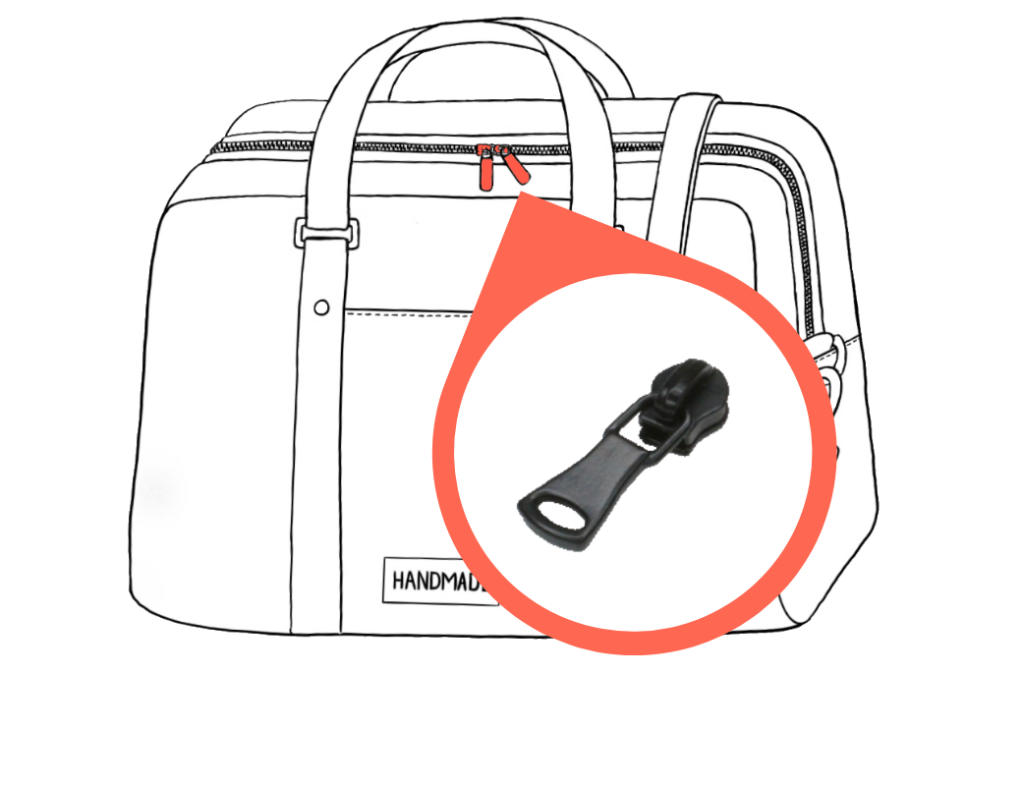
an essential bag closure
We can not talk about zippers without also having a close look at zipper sliders.
A zipper slider is the piece of hardware that slides over the zipper teeth to actually close and open the zipper. The part that is attached to the slider needed to operate the slider is called ‘the zipper pull‘ or puller. Often slider and puller are used interchangebly, since they usually come pre-assembled.
Zipper sliders are also called: runner, puller, zipper pull, zip fastener, zipper closure or slide fastener.
You know already that zippers come in types and sizes. Importantly, the same is true for zipper sliders.
Size is the most obvious one. Since the coil or teeth of a #3 zipper is more narrow than that of a #5 zipper, you need to adjust the size of your slider too.
Less obvious is that you need to match also the type of slider to the type of zipper. While you may succeed in placing a slider for another type zipper on your zipper tape while assembling your bag, chances are big that either the slider will not run smoothly and/or eventually stop functioning, leaving you with a crooked end product.
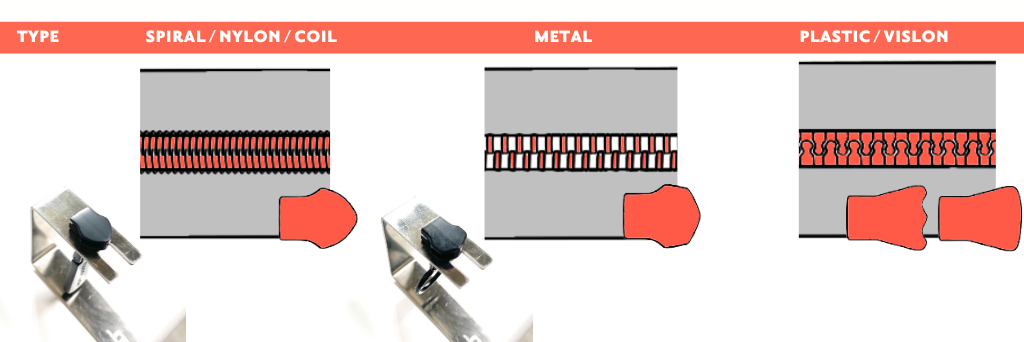
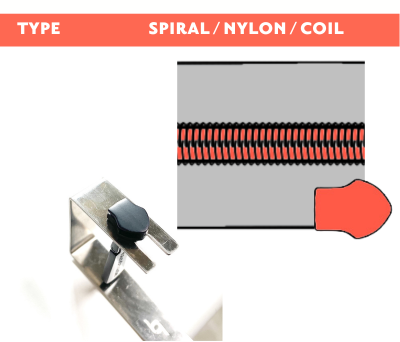
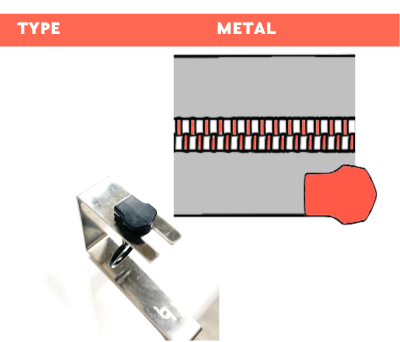
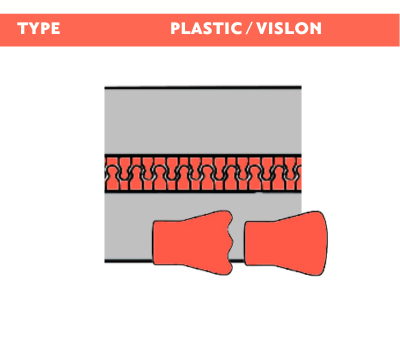
If you have a bunch of sliders lying around, but have no idea which type it is, don’t worry. Just compare the back of your slider with the shape in the illustrations above, and you are ready to go! And remember: metallic look coil zippers are NOT to be confused with metal teeth zippers!
FAQ
Question: What is the difference between (auto) lock and non-lock sliders?
Answer: If you take a close look inside the zipper slider, you will see that some have a pin-mechanism which can be removed only by pulling at the zipper pull. This mechanism is invented is to prevent zippers from unwanted opening. (Imagine you ate too much and the zip of your jeans would open because of that ;)).
For bags, this mechanism is not a must, so most zipper sliders on the bagmaking market are non-lock sliders. However, if you have some lovely auto-lock sliders at hand, there is no problem in just using them for your bag too!
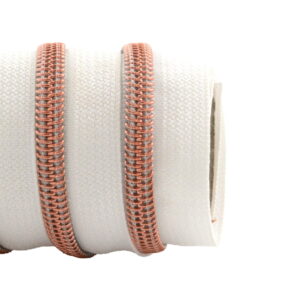
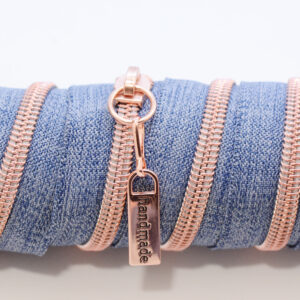
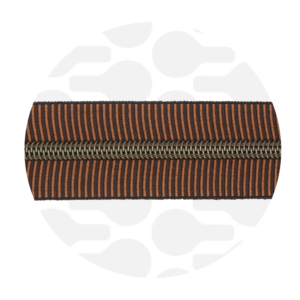
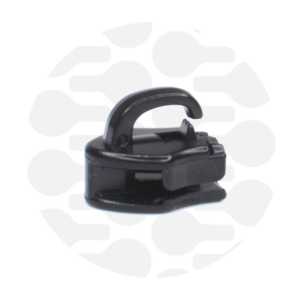
So you bought your zipper and chose the right slider to go with that zipper. Now what?
If you are handy and maybe a bit adventurous, you can place that slider without any special tool. There are many tutorials out there, but below what mostly works for us. If on the other hand you have been struggling or, no shame in that, feel a bit lazy, we can also recommend to use a special tool. You can just slide our wonder zip tool over the edge of your table top and you are all set to go.
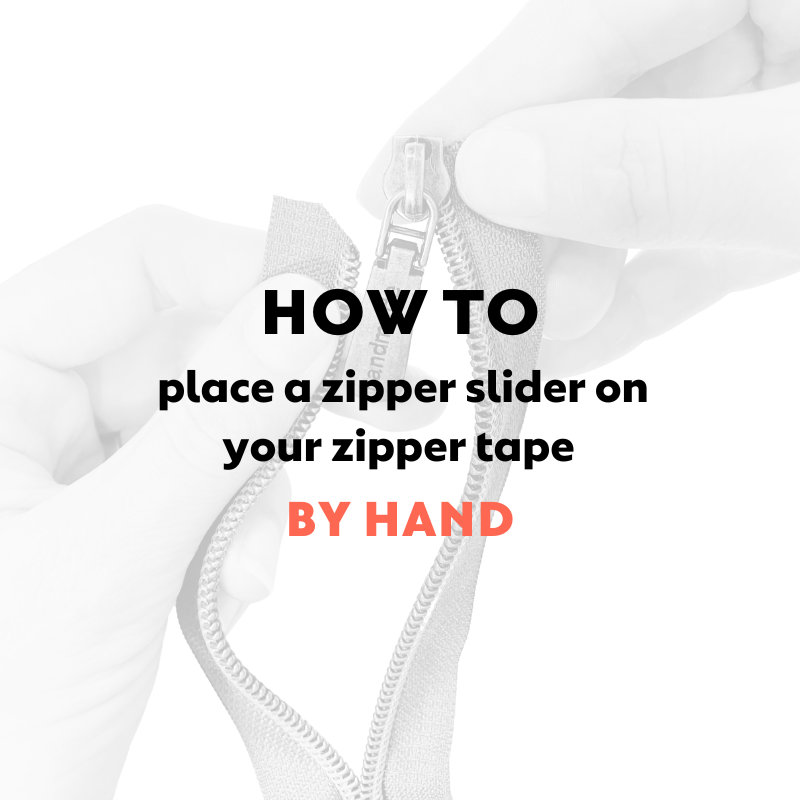






If on the other hand you have been struggling or, no shame in that, feel a bit lazy, we can also recommend to use a special tool. You can just slide our wonder zip tool over the edge of your table top and you are all set to go.
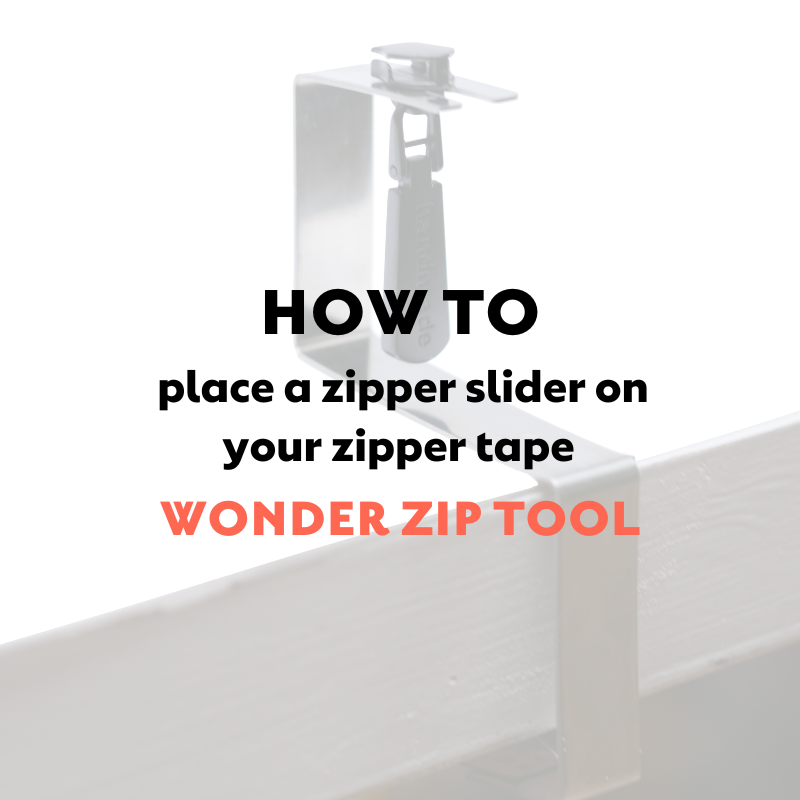








As already mentioned, a zipper slider actually consists of 2 parts: A slider and a puller.
Both can be purchased separately, and with our handy and flexible snap-on system there is no limit to your creativity. Let’s have a look!
